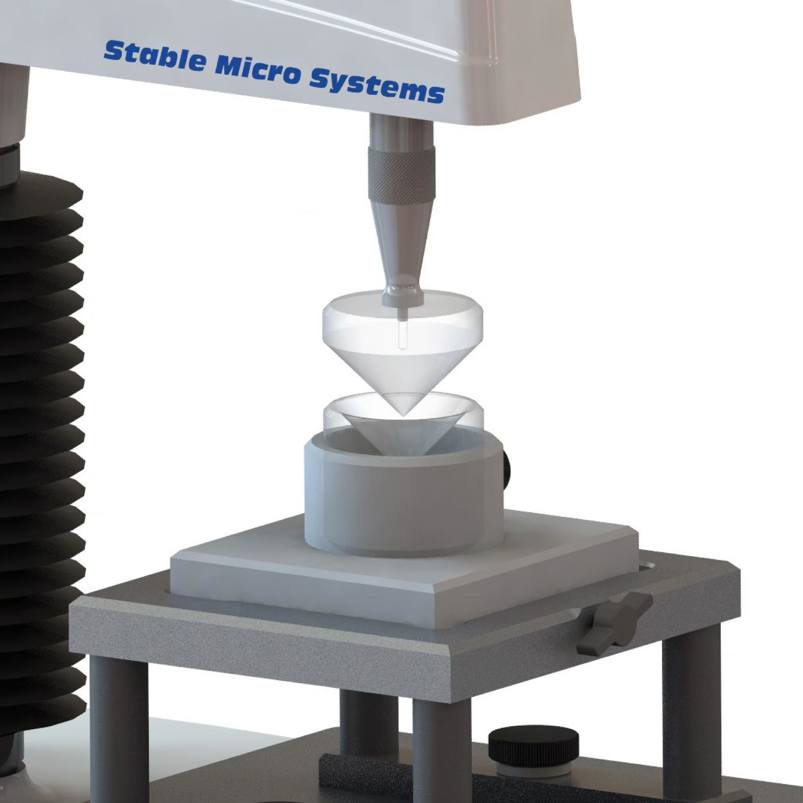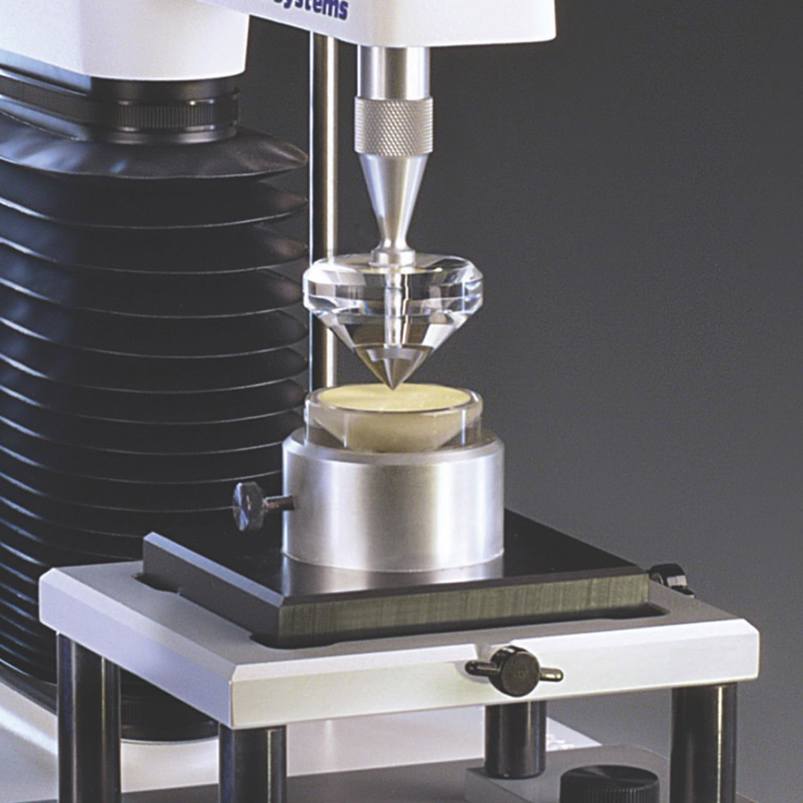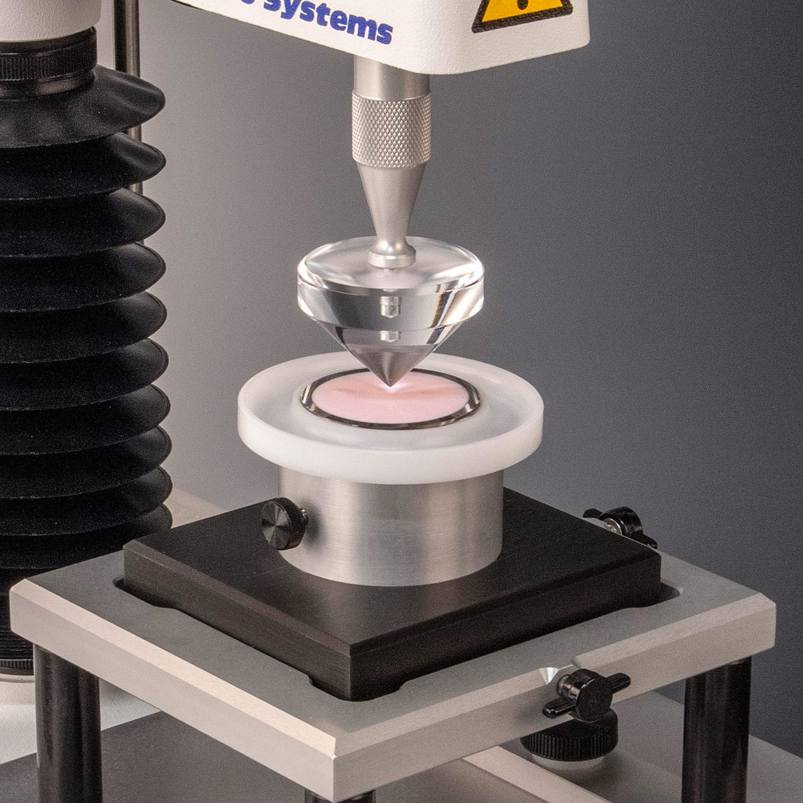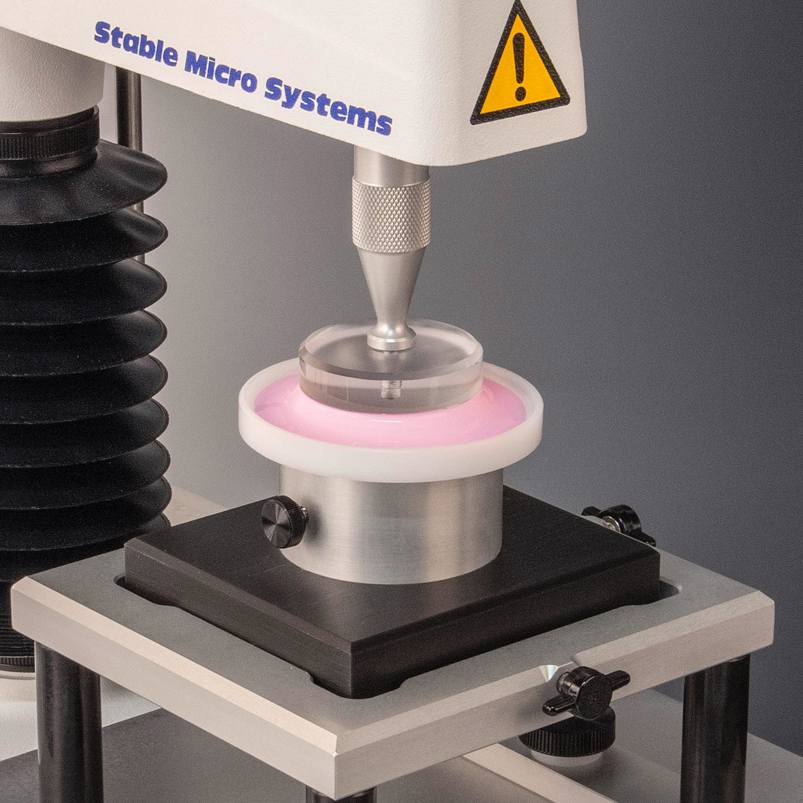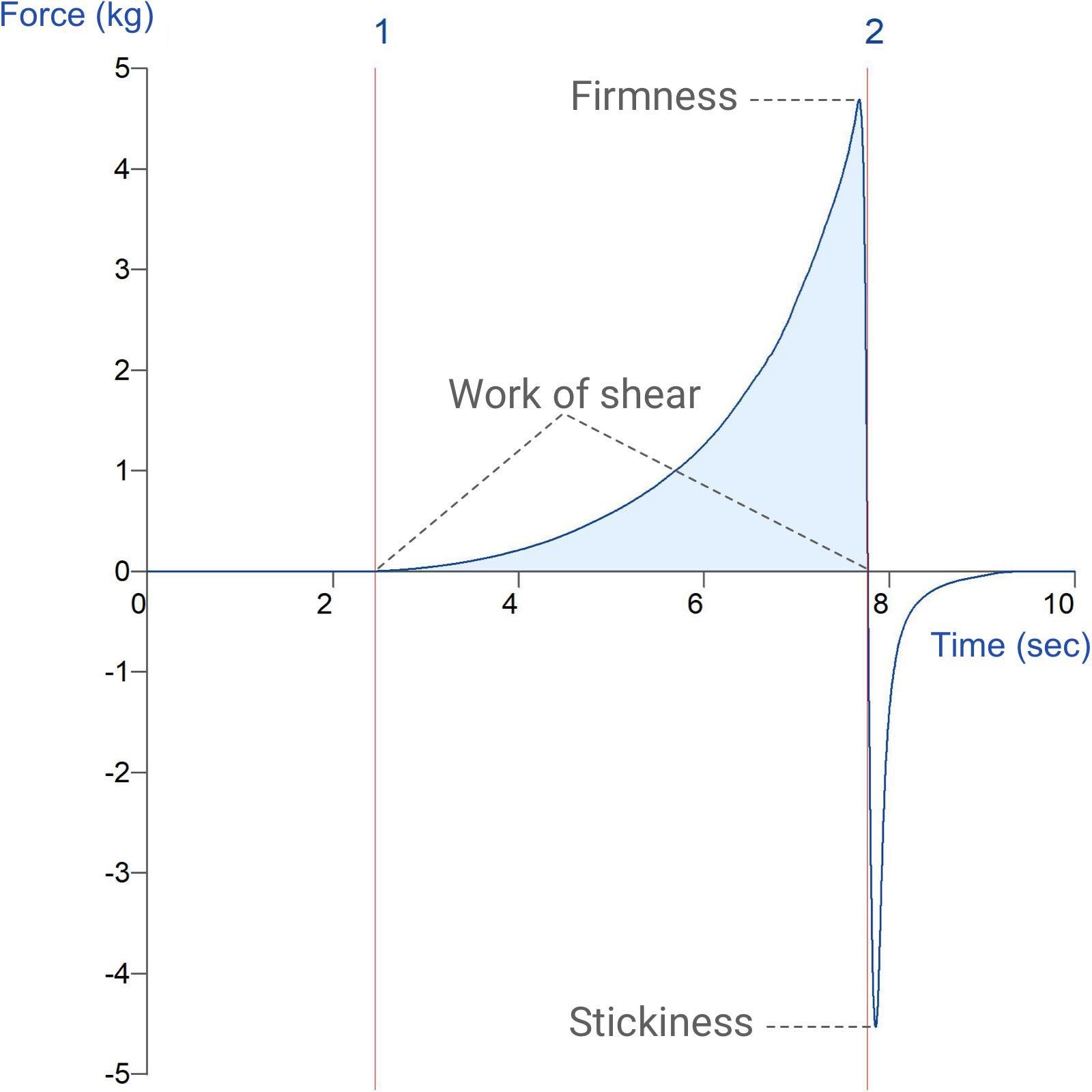Product overview
Spreadability is the ease with which a spread can be applied in a thin, even layer, for instance, onto a bread or cake surface or indeed onto skin. Spreadability of confectionery spreads, icings, lotions, waxes and creams are an important aspect of the consumer acceptability of these products. Firmness or hardness may be measured by the force required to obtain a given deformation or by the amount of deformation under a given force. Although spreadability is also a deformation under an external load, it is a more dynamic property. Measurements of firmness and spreadability are usually highly correlated, however the relationship is rarely perfect, and this is partly a function of work-softening. Margarine, for instance, worksoftens (when spread on bread) more easily than butter, which allows it to be more spreadable even when hardness values are initially equal.
Knowledge of the rheological properties of a semisolid product, is important in process design, quality control, and development of new products. These products may also need to be stored under refrigeration and should be spreadable when taken from the refrigerator. The spreadability out of the refrigerator and at room temperature should be even and smooth with no syneresis and separation.
The Spreadability Rig is an attachment which measures the ease with which a product can be applied in a thin, even layer. It comprises of a male 90° cone probe and five precisely matched female perspex cone shaped product holders which are easily locked into the base holder and precisely centred under the matching upper cone probe. The material is either deposited and allowed to set up in the lower cone holders in advance of testing or is filled with a spatula and the surface then levelled. The sample holders can be stored in refrigerated or frozen environments, or they can be used at room temperature. Filling is such to eliminate any air pockets from the product and as long as the material has not been excessively worked different styles of filling the material only affect the early part of the test.
The important action that the test is designed to measure, spreadability, occurs in the later stage of the test. The cone-shaped holders offer no locations into which the product can be packed or compressed, so the product is forced to flow outward at 45° between the male and female cone surfaces, the ease of which indicates the degree of spreadability. The probe withdrawal may also offer some insights into a product’s adhesive characteristics.
The peak force value (maximum force to shear) can be taken as the “firmness” at the specified depth. A firmer sample also shows a correspondingly larger area which represents the total amount of force (or otherwise referred to as ‘work of shear’) required to perform the shearing process. The probe then proceeds to withdraw from the sample and any adhesive characteristics are indicated by a negative force region on the curve.
How does the Spreadability Rig work?
Ideal sample form
Materials that can be deposited in order to set or viscous or semi-solid materials that can easily be manipulated into the sample vessel for testing. The sample must be homogeneous.
Benefits and limitations
- Samples should not contain large air bubbles or particulates
Optional extras
Spare Individual sample holders - HDP/SRH
Spare cone - HDP/SRC
Spreadability rig catchment collar - HDP/SRCC
Set of 5 Spreadability catchment collars - HDP/SRCC5
Technical information
Installation
Full installation instructions are provided within the Education Zone of the latest Exponent/Connect software version and on the technical information sheet accompanying this product.
Chemical compatibility
Stable Micro Systems probes and attachments are commonly made from four materials: anodised aluminium (AA6082 T6), stainless steel (316 T), Delrin (acetyl copolymer) and Perspex (polycarbonate).
In general use, probes and attachments made from these materials will be suitable for testing food products and inert non-food materials.
The four materials listed above are not universally resistant to all types of chemicals and as such the compatibility of the probe/attachment material with the product (to be tested) must be established to prevent damage to the probes and attachments. If the compatibility of the product with the probe is unknown to the customer then the chemical information about the product (Material Safety Data Sheet or Product Data Sheet) should be submitted to Stable Micro Systems. Stable Micro Systems will then assess the suitability of the probe/attachment material for use with the product and advise accordingly. If this advice is not sought then Stable Micro Systems will not accept liability for probes/attachments damaged by chemical attack from the product being tested.
Cleaning and maintenance
All probes and attachments may be cleaned in warm (or hand hot) water using a mild detergent. A soft brush may be used but abrasive cleaning aids should be avoided. Stable Micro Systems products should not be microwaved or cleaned in a dishwasher.
Screw threads should be lightly lubricated after drying using a light lubricant, e.g. petroleum jelly, mineral oil. This will aid the fitting and unscrewing of the item. Each component of a probe or attachment should be wrapped separately when stored, to avoid scratching or chipping. This will safeguard against any unnecessary damage to the accessory.
Troubleshooting
The cone probe must be perfectly aligned with the sample holder. Clamp the rig in the Heavy Duty Platform, move the probe down very slowly and move the Heavy Duty Platform around until the two cones are touching then secure the Heavy Duty Platform.

